Ceramics in Civita Castellana
History
Civita Castellana’s ceramic history has very ancient origins and is linked to the huge availability of raw materials in the area, which is rich in clay deposits. The earliest ceramic artefacts date back to the Neolithic, a period which archeologists now know, thanks to the discovery of the so-called ‘cavernette falische’ cave dwellings, was when the area was first inhabited. A considerable presence of ceramic material is documented on the Vignale heights, dating back to the Middle and Late Bronze Ages. However, production linked to ancient Falerii is attested from the Iron Age, as testified by the grave goods found within the burial grounds.
From the first half of the 7th century B.C., the town reached an level of autonomy in local production, which was characterised by impasto vases intended for banqueting, with a rich assortment of techniques and shapes inspired by Oriental and Greco-Eastern repertoires. Ceramic production in this period is characterised by saucers, ollae and amphorae decorated with geometric motifs or with typical Faliscan motifs, such as fish, birds and horses.
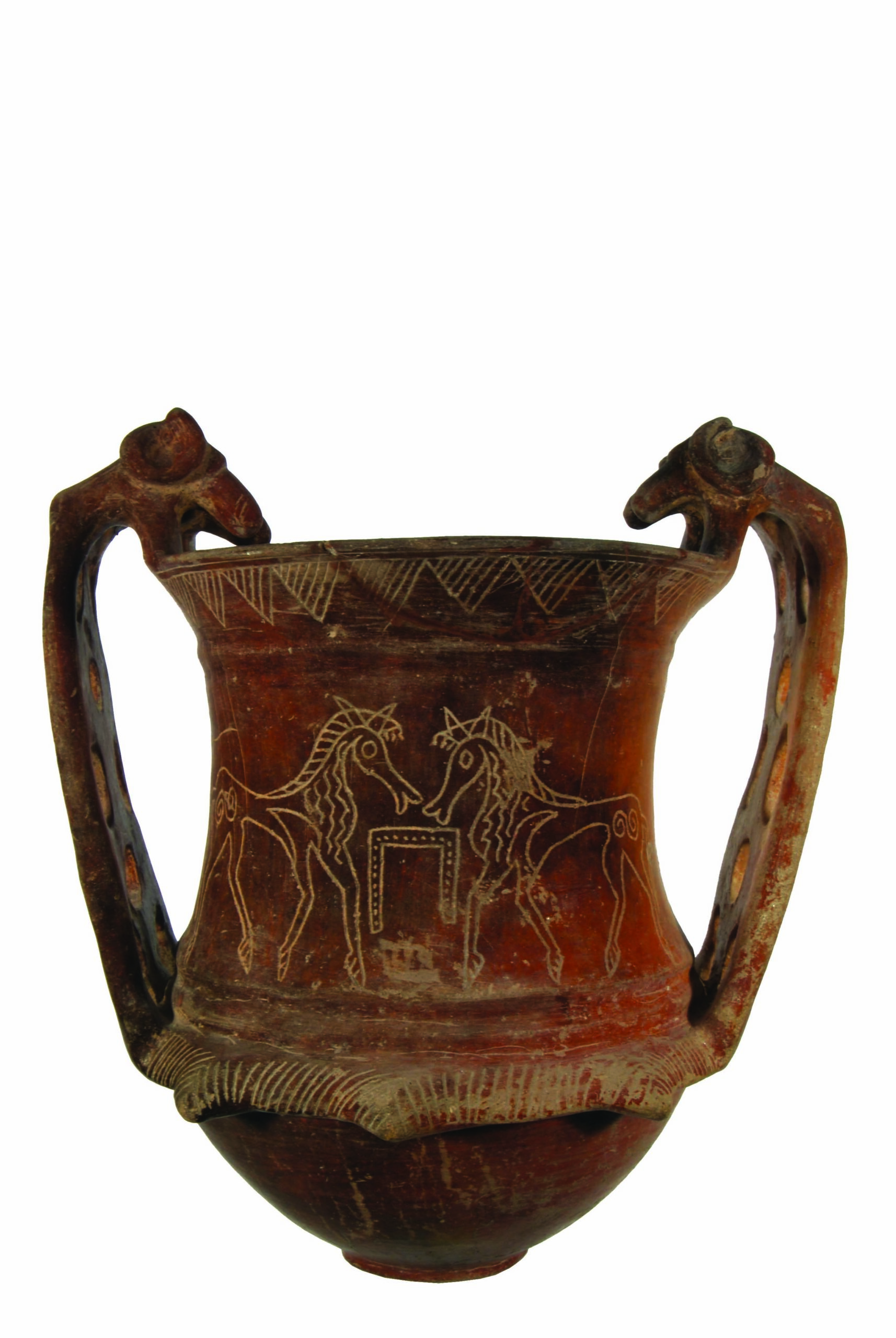
Kantharos, graffito impasto pottery. 7th century BC
Grave goods dating back to the 6th century BC reveal the population’s first contacts with the surrounding areas, and in particular with the Etruscan area, leading to the production of local bucchero pottery and the importation of Etruscan-Corinthian products. During this period, and throughout the 5th century BC, there was also trade with Greece, which led to imports of Attic pottery, decorated first with black, and later with red, figures.
The pinnacle of Faliscan production can be placed between the 4th and 3rd centuries BC: archaeological finds from this period attest to an intense activity of ceramographers of the highest quality, characterised by red-figure pottery, overpainted pottery and black-glazed pottery. Falerii was destroyed by the Romans in 241 BC, yet the population continued to survive in a nearby site, known as Falerii Novi, and ceramic production continued uninterrupted.
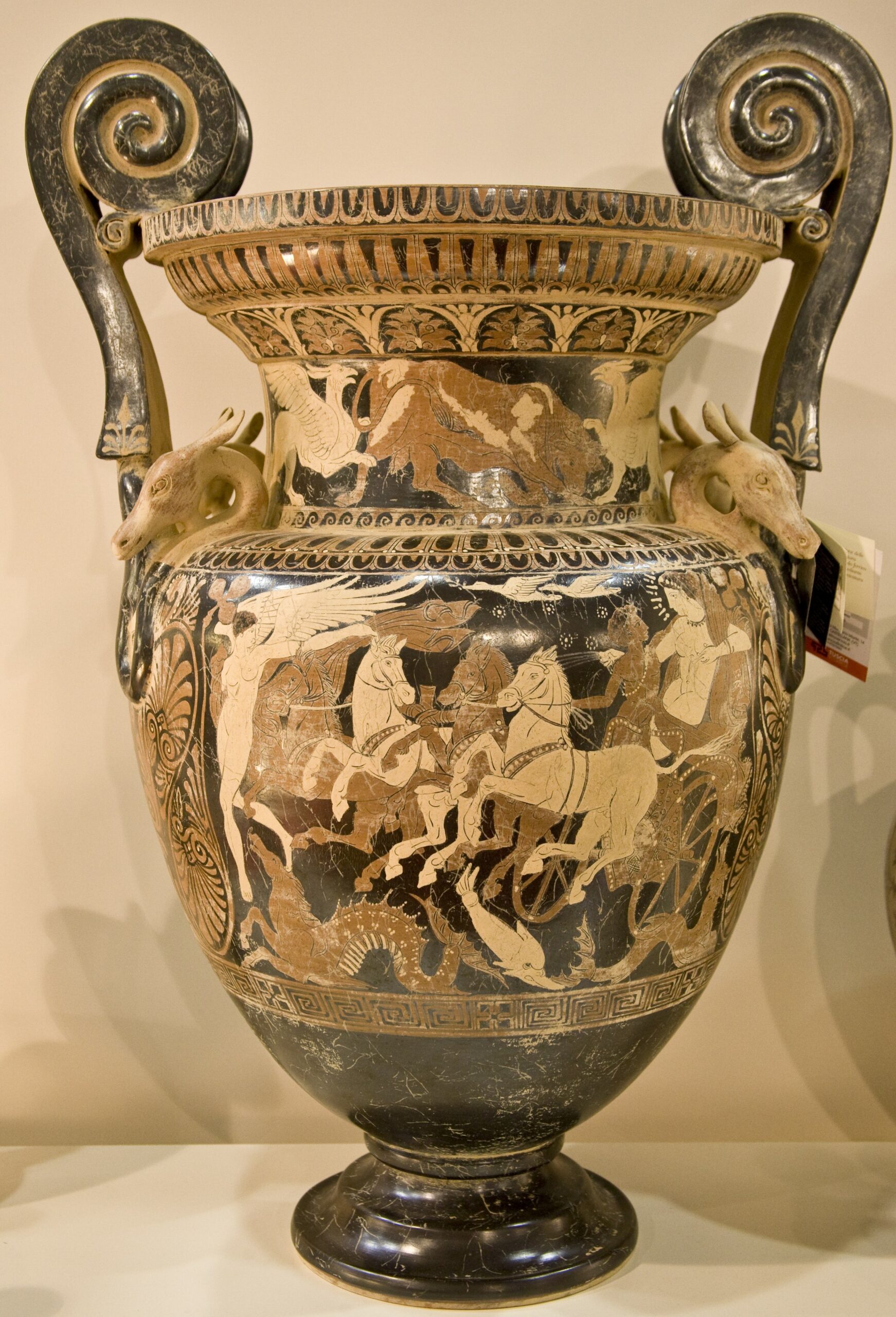
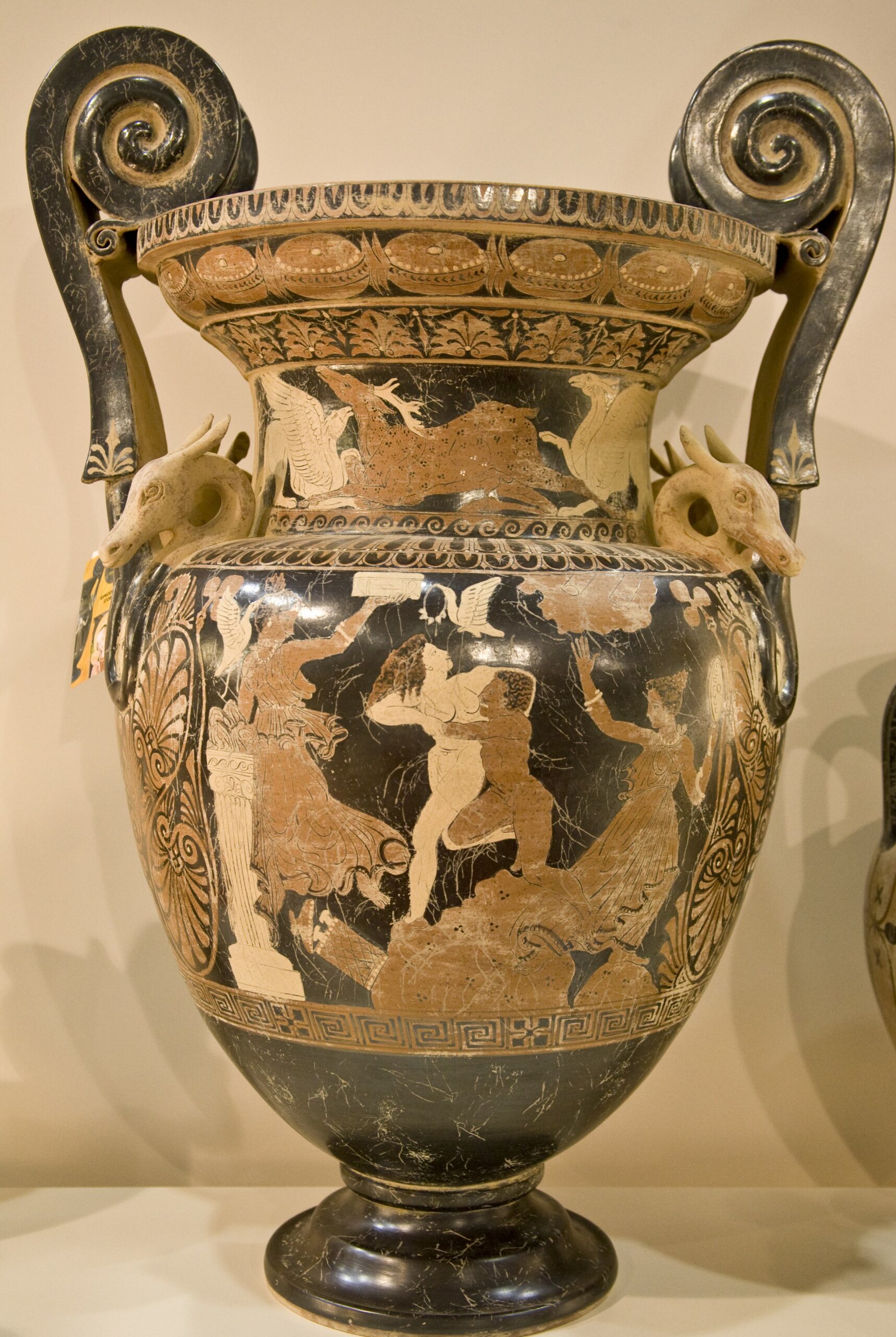
Cratere dell’Aurora, masterpiece of Faliscan art. 4th century BC (reproduction by Vincenzo Dobboloni)
Medieval ceramic production is only documented through rare, and often chance, finds of ceramic fragments that evidence, for instance, the production of ollae and achromatic ceramic jugs.
Sangallo Fort holds a wealth of evidence of ceramic production from the Renaissance period, which shows that the art experienced a newfound vitality. A group of ceramics, dating back to this period and preserved in the storage rooms of the Museo dell’Agro Falisco, was recovered during the emptying of a large cistern in the main courtyard.
The material, which is dated to between the 15th and 16th centuries, is largely made up of jugs, bowls and plates coated in enamel. The beauty of some of the items testifies to the importance of the patrons as well as the wealth displayed on noble tables of the period.
Sources also evidence a revitalisation of ceramic activity in Civita Castellana. The first official record dates back to 1566, when the Municipal Statute mentions the Corporazione dei Vascellari, which brought those who worked clay together to produce vases and utensils.
Modern ceramics began in 1792, when the Reverenda Camera Apostolica granted two brothers, Francesco and Giuseppe Antonino Mizelli, and their partner, Giuseppe Valadier, the right ‘to be able to dig the earth’ in perpetuity in the territories of Civita Castellana, Sutri, Ponzano, S. Oreste and Fabrica, along with a patent for the production of earthenware ‘for English use’ for twenty years. After disputes between the members, in 1906 the concession passed to Francesco Coramusi for eighteen years. In 1810, on the occasion of an exhibition held in Rome in honour of Napoleon I, he was awarded a silver medal for presenting ‘large vases and earthenware’.
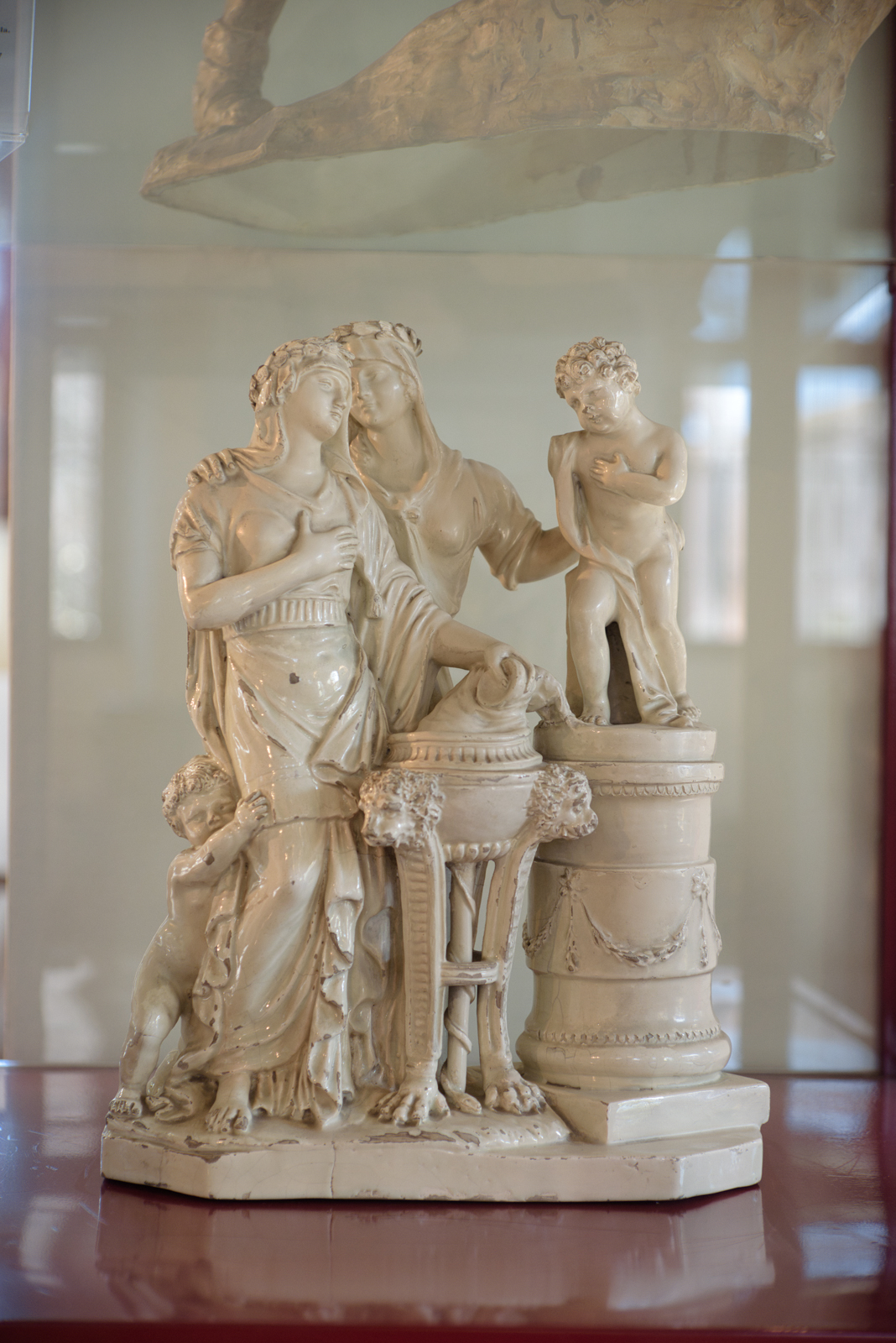
Neoclassical group in glazed earthenware. Treia factory, 1810 – 1830
With the termination of the right of private ownership, other manufacturers and small factories producing artistic products sprung up in Civita Castellana from the 1830s, such as the Fratelli Cassieri enterprise and the Tomassoni and Brunelli factories.
In the first decades of the 20th century, the town, which had hitherto stood out for the production of artistic ceramics, started producing goods for the sanitary ware sector, which, although mass-produced, still retained artisan traits.
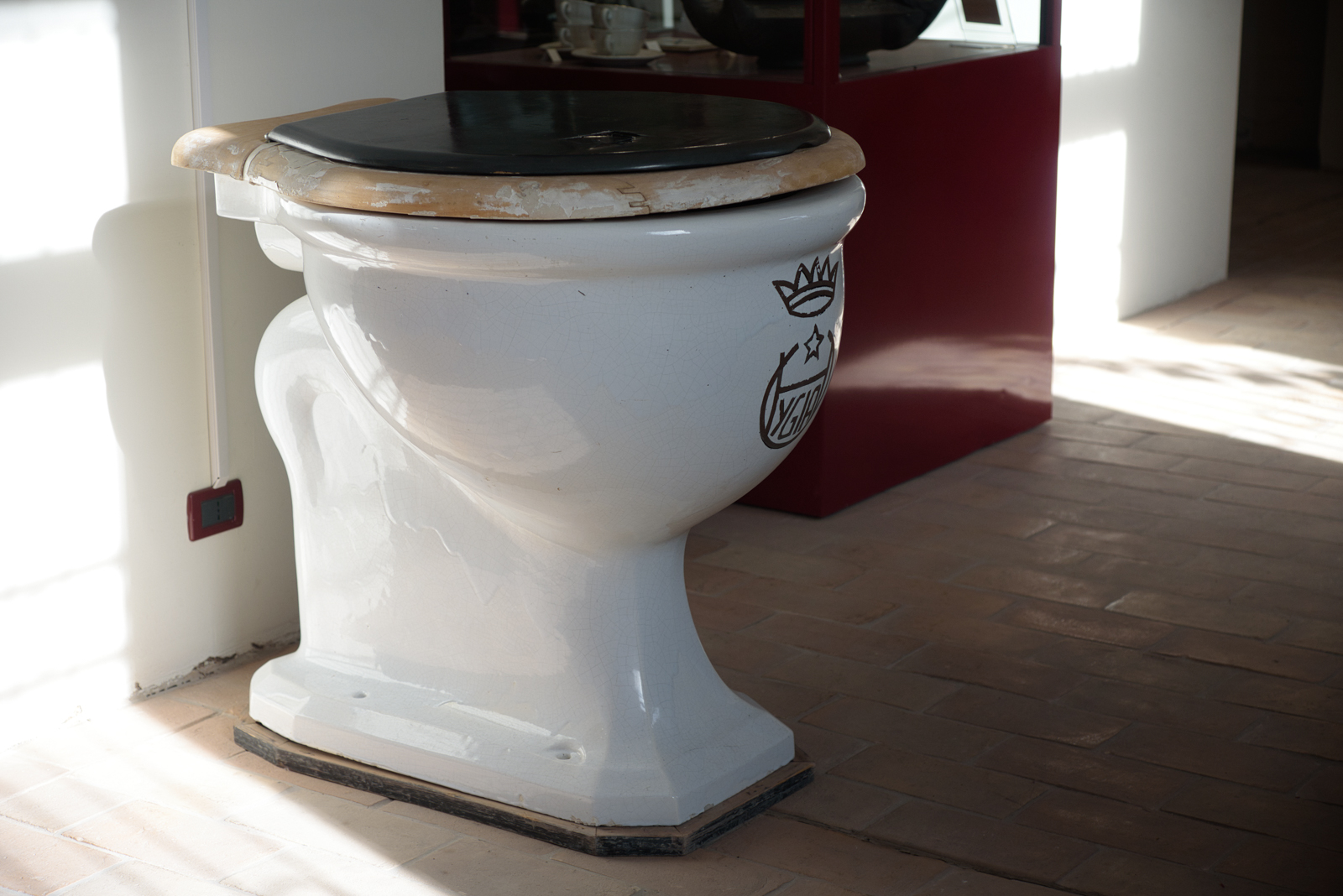
Sanitary-ware model created for the 1937 Milan Trade Fair. Sbordoni Ceramiche, unique piece
Many professional figures worked in the factories. Moulders made the piece to be fired entirely by hand, kiln workers were responsible for firing and chemists were in charge of the mixtures.
There were also many female decorators employed in the artistic ceramics workshops.
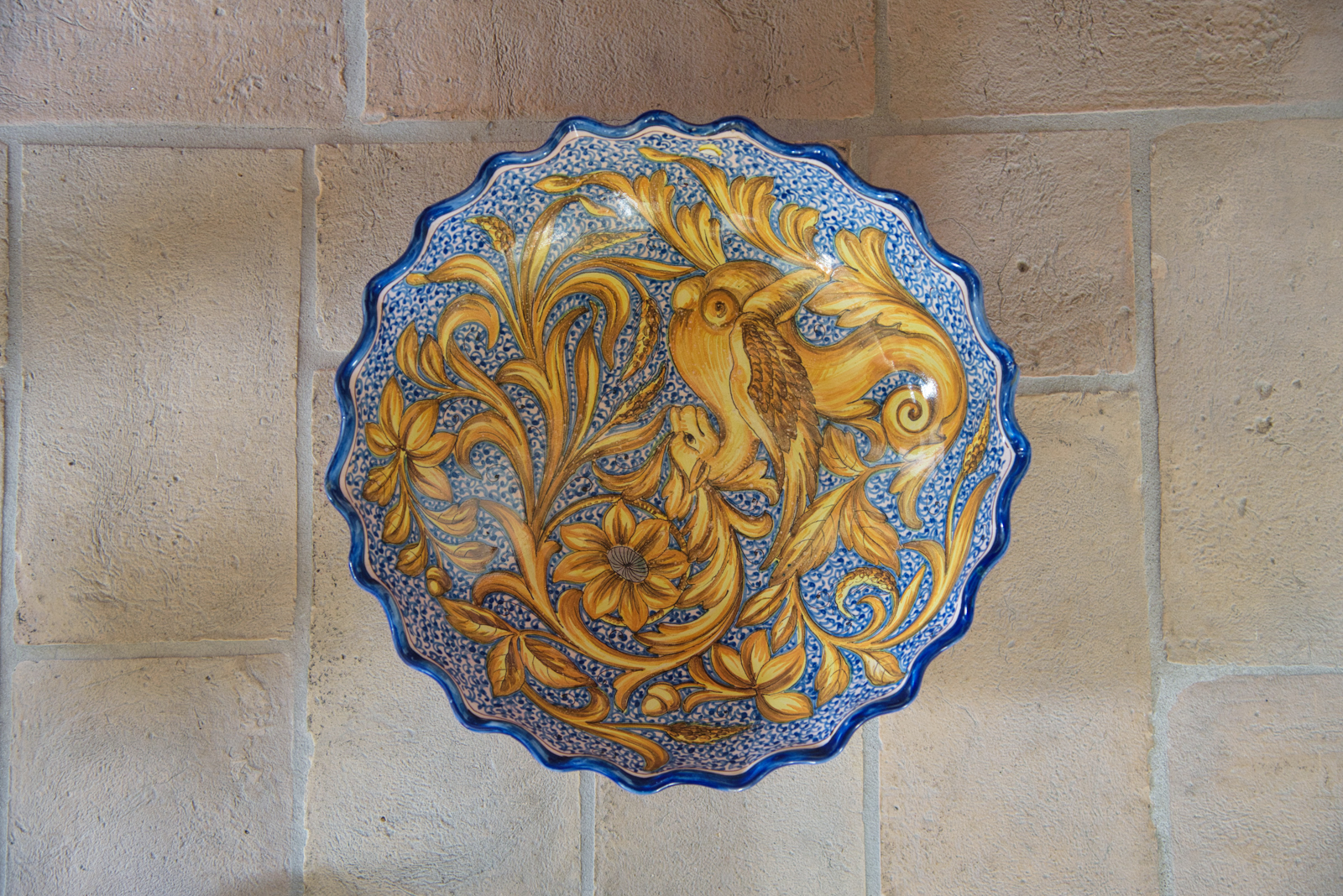
Fruit bowl – Crespina. Maioliche d’Arte Antonio Coramusi and Son, circa 1930
In those years, a prominent figure in the local ceramic industry was Casimiro Marcantoni, Civita Castellana’s first entrepreneur: in 1909, he was partner and director of the city’s two largest factories, Fabbriche Riunite per la Ceramica and Cooperativa Ceramisti. In 1926, the latter became Ceramica Marcantoni and it was famous for the quality of its products and the versatility of its production. The factory closed its doors in 1961, but its two chimneys still mark the urban landscape.
Ceramic production underwent radical technological changes after World War II and especially in the 1950s. The old kilns were replaced by tunnel kilns, hand moulding was replaced by the casting technique, and vitreous china was introduced in the production of sanitary ware area.
Today, ceramics are produced both in artisan workshops and in specialised factories, following a continuous evolution towards shapes, decorations and types that fully meet the needs of today’s market.
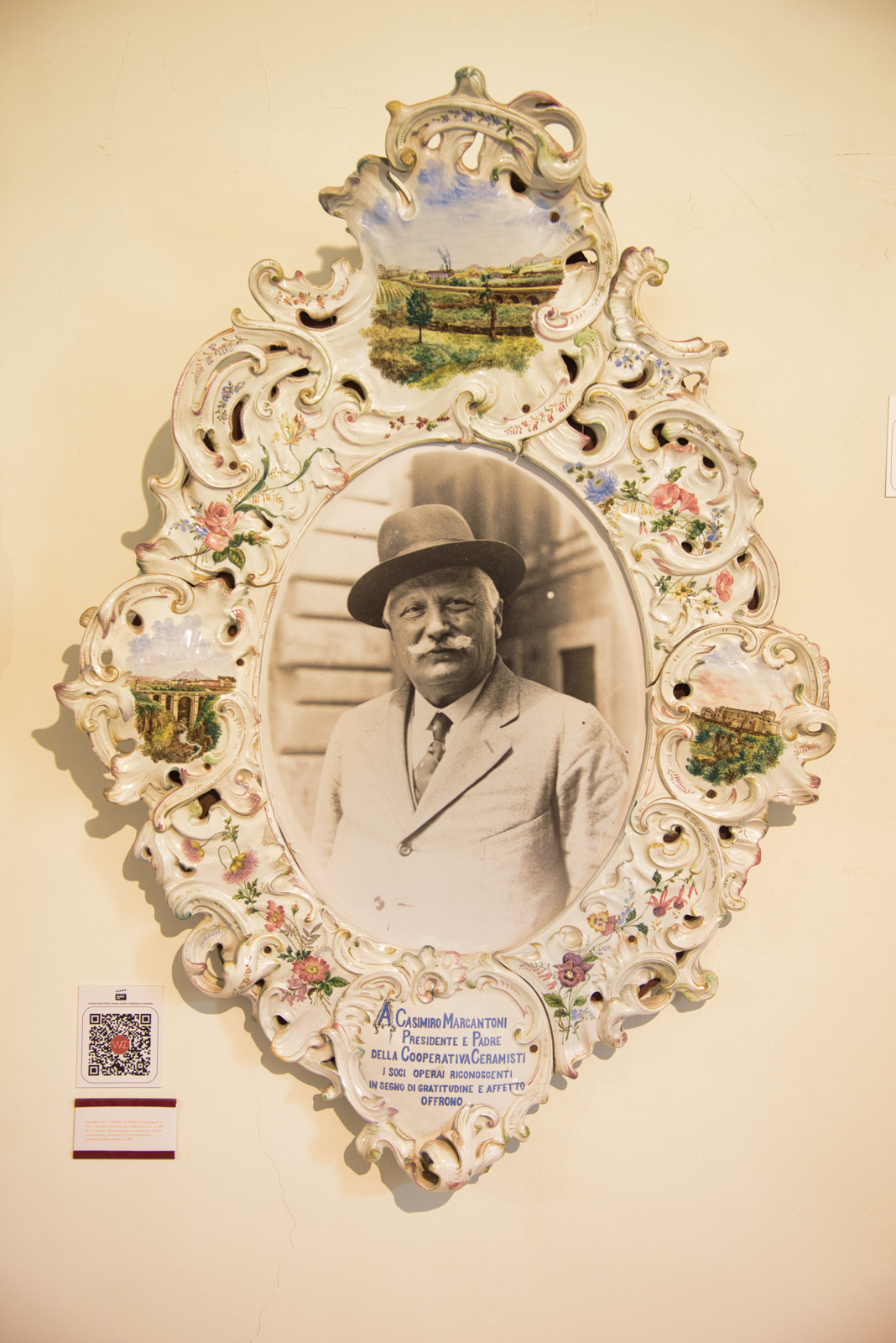
Frame with photo-portrait of Casimiro Marcatoni. Marcantoni Ceramics, 1907
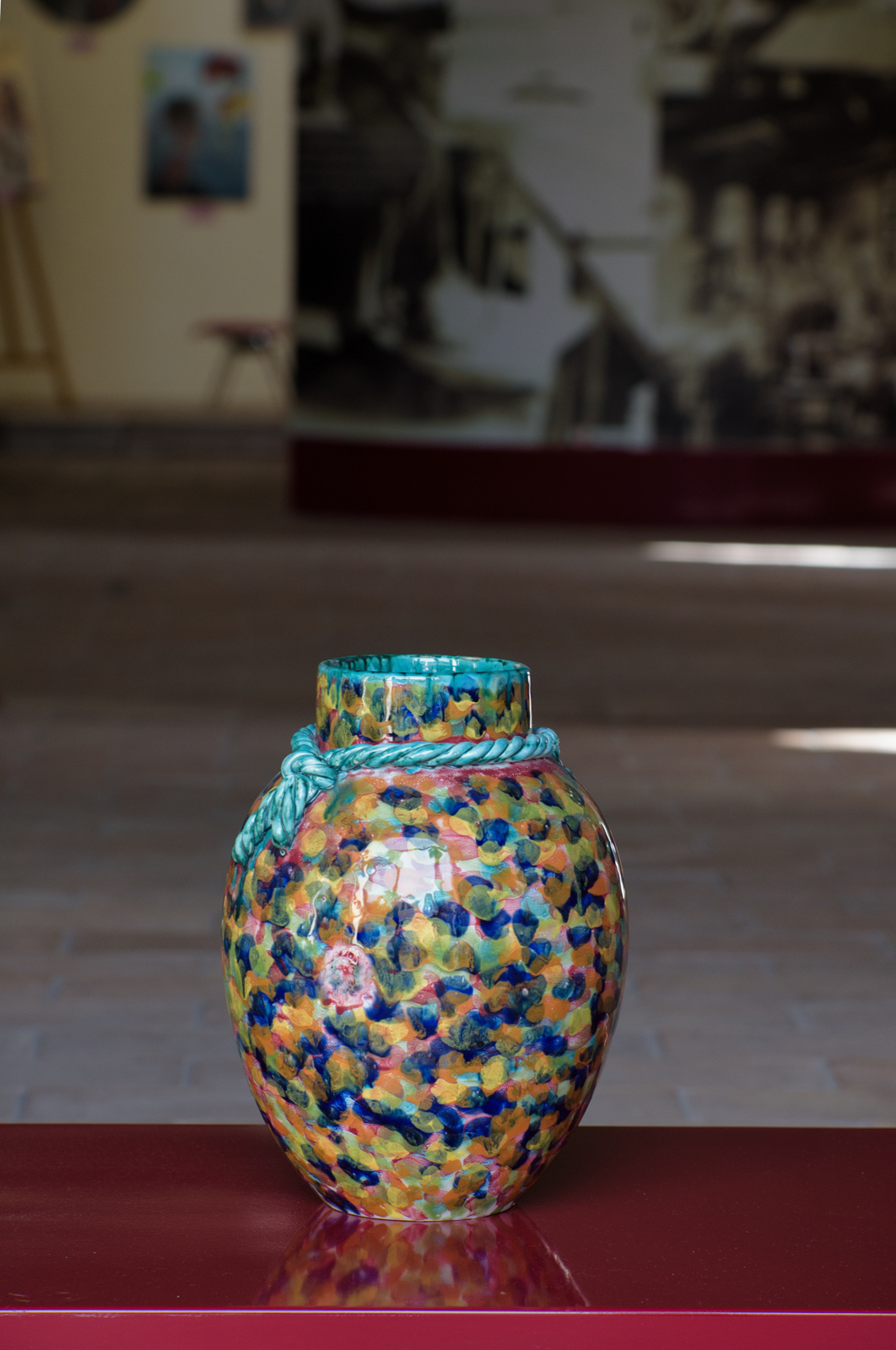
Earthenware vase. Sciarrini and Cirioni Italian Artistic Majolica (M.A.I.S.C.), circa 1960
